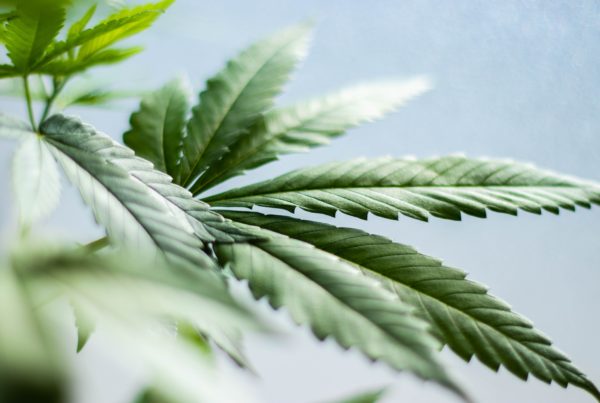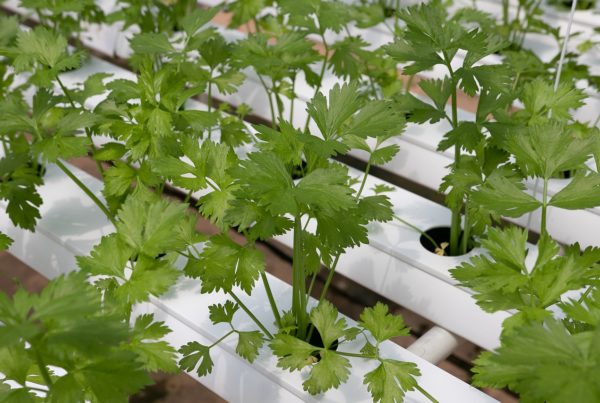As more states legalize recreational and medicinal cannabis, we’re starting to see the environmental impact of marijuana cultivation like never before. Excessive water and energy consumption, extraction practices, and even cannabis disposal each have their own environmental footprint, but just how bad is it? Could our expanding marijuana market actually be destroying the planet?
The Environmental Impact of Cannabis Terpenes
When we think about the environmental effects of cannabis cultivation, we tend to think of the manufacturing process—chemicals, water, energy. But researchers are finding that the cannabis itself can be a significant pollutant when grown in large quantities.
William Vizuete, associate professor at the University of North Carolina’s Gillings School of Public Health, led a comprehensive study examining the environmental impact of terpenes, the natural plant oils that give marijuana its familiar aromas. Terpenes have been shown in studies to promote certain therapeutic effects when consumed, but they’re also a form of volatile organic compound (VOC).
Vizuete, along with a team from the University of Colorado Boulder and England’s Lancaster Environment Centre, grew four strains of marijuana in an enclosed chamber over 90 days. During that time, the team measured the terpene release and used their findings to calculate the emissions potential in a full-scale outdoor grow.
The team concluded that marijuana has the potential to more than double the existing rate of VOCs in the atmosphere. This is concerning because VOCs interact with other contaminants in the environment to create ozone, an unstable toxic gas. Vizuete and his team estimated that the added VOCs caused by cannabis cultivation can produce more than 2,000 metric tons of ozone per year—from the cannabis market alone.
There are ways to mitigate these effects, however. For instance, many indoor grow houses are using massive carbon filtration systems to remove VOCs. This isn’t so easy to do in an outdoor grow setting, but fortunately, ozone levels are less likely to spike in plant-rich environments that lend themselves to outdoor growing.
The Environmental Impact of Hydroponics
Hydroponic systems have become extremely popular for cannabis cultivation. They require as little as 10% of the water of a traditional grow, and they use no soil. This sounds like a win for the environment, and it is, but there is one aspect of hydroponics that can be hazardous for the planet: contaminated waste water.
Hydroponic water is treated with a range of nutrients including nitrogen, sulfur, zinc, phosphorus, and potassium. When the water is discarded, those nutrients make their way into sewers, streams, lakes, and other water systems. This can devastate local ecosystems by contributing to excess phytoplankton and algae blooms, depleting oxygen levels, and releasing toxins into the environment.
Hydroponic water should always be purified prior to disposal. Small-scale growers can do the job using an RO filter, but larger commercial cultivators require an industrial solution like a UV disinfection or pasteurization system.
There is one more potentially hazardous aspect of hydroponics that should be mentioned: the use of PVC systems. PVC is a leading source of chlorinated toxins like phthalates, which have been linked to various cancers, liver problems, and birth defects. Though PVC systems are among the most cost-effective, plastic and metal systems are far superior from an environmental standpoint.
The Environmental Impact of Cannabis Extraction & Concentration
Cannabis oil extraction is another source of potentially harmful VOCs. Extraction requires the use of harsh solvents like propane, ethanol, butane, and isopropyl alcohol, usually in high concentrations. These solvents get washed into sewers and water supplies where they harm aquatic life, and they also get emitted into the environment in the form of airborne VOC emissions.
In many cases, the excess release of VOC emissions will place you in violation of local, state, or federal clean air guidelines. As a result, you could face fines, penalties, or even the loss of your cannabis cultivation license. That’s why it’s so important to have a high-quality filtration system in place.
The Environmental Impact of Cannabis Energy Consumption
A commercial grow house typically consumes electricity 24 hours a day, primarily with the use of lights and fans. Consider that, in 2015, an average household in Boulder County, Colorado, consumed 630 kilowatt-hours (kWh) of electricity per month. By contrast, a 5,000 sq. ft. indoor grow facility in the same county used 41,808 kWh, almost 7 times the amount of the average home.
The Northwest Power and Conservation Council (NPCC) reports that indoor cannabis facilities can consume 2,000 to 3,000 kWh of energy per pound of product. The lighting requirements are similar to those of hospital operating rooms, where lights are 500 times more powerful than a recommended reading light. The fans in these facilities often see 30 fan speed or temperature changes per hour, which is 60 times the rate of an average home.
Some jurisdictions are taking steps to encourage green energy usage in cannabis facilities. In Boulder County, for example, growers are required to implement renewable energy or pay a $2.16 charge for every kWh. That money is used to finance green energy initiatives, including the development of eco-friendly equipment for cannabis cultivation.
The Environmental Impact of Cannabis Water Consumption
According to a 2015 BioScience report, cannabis requires a minimum 22 liters of water per plant per day during the June-to-October growing season. That translates to about 3 billion liters per square-kilometer of greenhouse space and 430 million liters per square-kilometer of outdoor growing space.
As a result of these incredible water demands, some cultivators are seeking out eco-friendly alternatives. For instance, some are filtering and recycling their water via an advanced filtration or reverse-osmosis system. Some are using condensate reclamation systems to capture and reuse wastewater runoff. Others are relying more heavily on hydroponic systems, which recycle water by default and require up to 10 times less water than a traditional grow.
The Environmental Impact of Cannabis Waste
Cannabis waste falls into two categories: hazardous and non-hazardous. Non-hazardous waste includes discarded plant material and cannabis products. Hazardous waste includes extraction solvents, contaminated lab debris, vape pens with batteries, and cannabis lighting equipment.
Hazardous waste is especially problematic, as it can negatively impact the environment by infecting landfills, releasing harmful VOCs into the air, and polluting water supplies.
Consider that tens of millions of cannabis vape pens are making their way into landfills every year. When discarded in such high numbers, all types of cannabis waste, including product packaging, can become an environmental problem if not properly discarded.
Cannabis cultivators can mitigate the potential environmental impact of waste accumulation by working with a licensed and experienced cannabis waste management solution. GAIACA renders all hazardous and non-hazardous waste on site according to state and local guidelines, recycling where possible and ensuring that all waste is taken to the appropriate facility. We even have a vape pen recycling program to help keep those hazardous accessories out of landfills.
If you manage a cannabis cultivation facility, you can keep your carbon footprint to a minimum by following a few simple principles:
- Filtration
- Conservation
- Reclamation
- Waste management
The emerging cannabis industry offers enormous benefits, but we all need to do our part to ensure that greater access doesn’t come at the cost of a further compromised planet.






